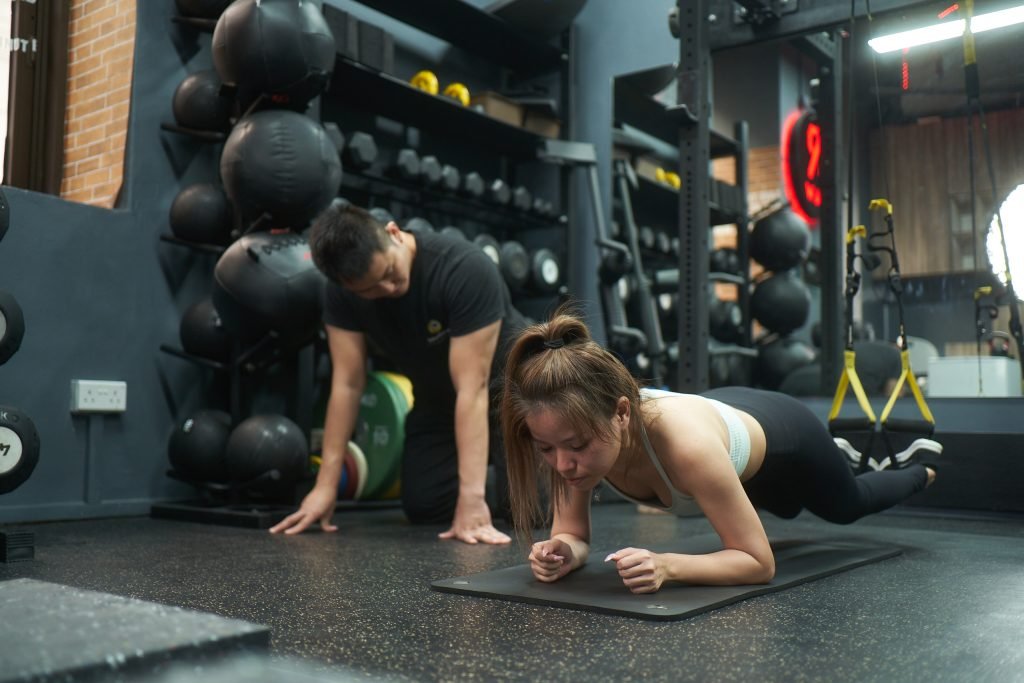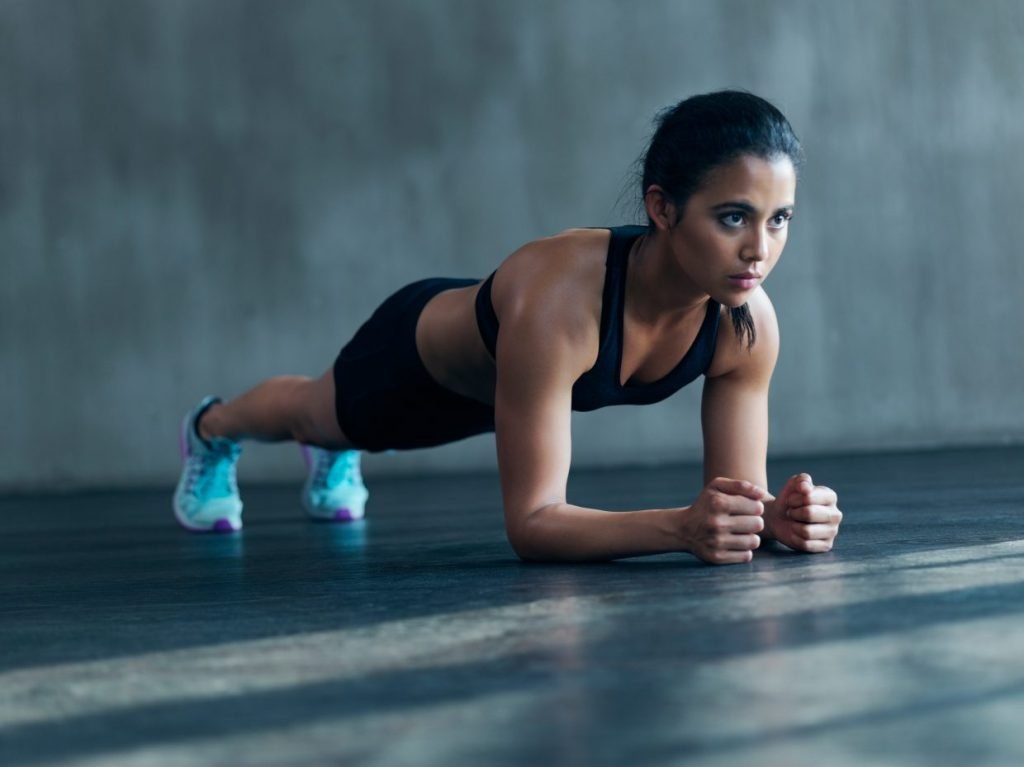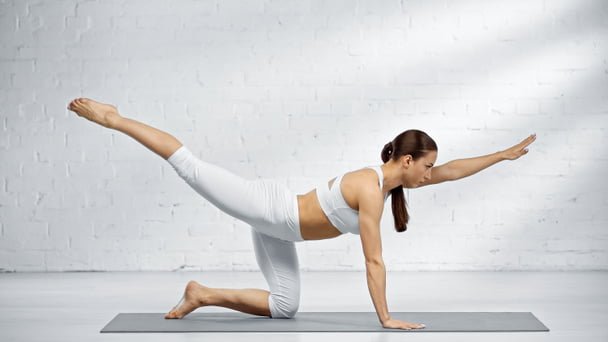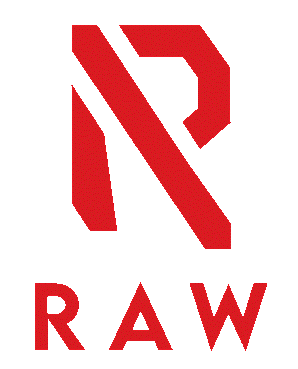The fitness program must include core training. The core muscles act as a foundation for fitness by keeping the body lean and fit. RAW places a strong emphasis on providing the best core exercises for our clients because of this.
Through proper breathing, runners can experience increased stamina, and other sports can lower their risk of tearing a muscle.
As a result, core strengthening exercises are known to stop the development of physical ailments like ruptured disks, fractures, and sprains among other incapacitating conditions.
Since weak muscles in the core system are equally to blame for slouching and bad posture, strengthened core muscles will help to improve posture as well as the stability and control of the other muscles.
While though routine tasks like ironing, picking up objects off the floor, or even spending lengthy periods of time at a computer can have some effect on core training, it is frequently of minor consequence.

What is Core training?
Targeted strengthening and stabilization of the core muscles is referred to as core training. The transversus abdominis, external and internal obliques, rectus abdominus, and pyramidalis make up the majority of these core muscles. The spine is supported and shielded by these muscles.
Moreover, it serves as the connector between the upper and lower bodies. For a body to be healthy, it is crucial to have a strong and flexible core. With core training, lower back discomfort in particular can be managed.
Muscle strength gains of any size have a significant impact. The general strength of the trunk is boosted by intra-abdominal pressure, which supports stability. The abdominal muscles are primarily contracted to do this. Additionally, current research indicates that this mechanism also involves the diaphragm and the sometimes misinterpreted pelvic floor muscles.
Prior to the initiation of any limb movement, these muscles contract. The trunk is now ready for use. It’s noteworthy to note that simply activating these muscles 5–10% more will strengthen the spine for both everyday activities and strenuous jobs.
Which muscles belong to the Core?
The core of the human body is located in the region in-between the upper and lower bodies. The muscles that surround this core are those that make up the core. Parts of the gluteal and thigh muscles, as well as the back and abdominal muscles, play a role in this. The core muscles’ primary job is to transfer power from the upper to the lower body in addition to stabilizing and moving the spine.
The transverse abdominis, multifidus, internal and external obliques, erector spinae, diaphragm, pelvic floor muscles, and rectus abdominis are the muscles that specifically contribute to core stability. Your lats, traps, and glutes are some of your accessory core muscles.
The trunk complex is propelled by the massive, superficial abdominal and hip muscles. They contribute the most to the hips and torso having enough strength to withstand rotational forces pressing on the body. Yet, the smaller, intrinsic muscles that run along the spine help support and rotate the spine.
Who can benefit from Core training?
Everyone should engage in core training! Strengthening the body’s inherent stabilizing muscles benefits daily activities as well as athletic performance. We frequently make actions like bending, gripping, and rotating.
Even hard-training athletes don’t want to risk injuring their back while picking something up off the floor. Although it can happen, the risk of an injury from a routine task is substantially lower if the core is kept strong.
How do you train the Core?
The best way to train core strength is to use a mixture of dynamic and isometric exercises for the abdominal muscles, back muscles, and glutes. Different rep ranges should be used and trained both with and without weight. Origin of core training.
In contrast to other sports, core training through velocity based training does not only involve simple stretching and bending movements. Instead, sit-ups & Co. are integrated into special movement sequences within an exercise.
As mentioned, the following muscle groups are central to core training. (Back muscles, abdominal muscles, hamstrings, glutes, hip rotators). Exercises in the area of core training can best be done with your own body weight. This variant is particularly suitable for beginners and seniors and can be carried out both in the gym and at home without any problems.
Hence, it is important to add core-focused exercises that will condition your muscles. Here are some of the best core exercises that you can perform at your local training facility with little supervision. These are some ab workouts for beginners other than the traditional planking. Time to work those muscles!
Best Core Exercises #1: Tabletop Leg Press
The transverse abdominal muscles, which are frequently deep and difficult to reach with other forms of training, are trained in the core abdominal areas of the Tabletop Leg Press. If you have back issues, this is the finest core workout to perform.
Step 1: Start by laying on your back with your legs raised to a 90-degree angle.
Step 2: Squeeze your stomach muscles together to push your lower back into the ground. Put your hands on the front of your quads after slightly crunching up.
Step 3: Press your quads away while driving them into your palms. Before returning to the starting position with your back flat on the ground, hold that position for six seconds. Aim for 3 sets of 10 repetitions. Keep in mind that it is functioning if you feel the strain in your core.
For more information on how to perform the Tabletop Leg Press, see this video:
Best Core Exercises #2: Plank

One of the best core workouts you can perform is the plank. It is incredibly simple and efficient for core training. It is the ideal complement to any full-body exercise.
Step 1: Align your elbows so that they are directly below your shoulder blades or you can regress by making your arms straight. Make sure your upper body is straight and parallel to the ground. Make sure your arms aren’t too far apart because doing so could injure your back.
Step 2: Keep your feet hip width. Maintain a straight posture from head to toe. This is a pose that resembles a push-up. Imagine putting your shoulder blades within the pockets of your pants by tucking them together.
Step 3: Apply pressure and squeeze to your glutes and front of your thighs. You shouldn’t experience any back pain when done correctly. The plank is designed to train your core muscles, which are located behind your back.
Step 4: Now, contract your abdominal muscles as if in a reflex to absorb a hit. This will put pressure on the lower abdomen. Starting off, hold plank positions for 2-3 seconds for 10 repetitions in sets of 2-3, then gradually advance as you gain more assurance.
Planking is not just a passive position, as beginners might believe it to be, as can be seen from the steps. The exercise works the back, shoulders, and abdominal areas, among other body parts involved in core training.
Once you’re ready, you may consider advancing the basic plank to focus on specific muscles in your body, such as the Side Plank, which strengthens flank muscles.
To understand how the Plank can be done, look into this video for more details:
Best Core Exercises #3: Bird Dog Exercise

Your lower back pain can be greatly reduced by performing the Bird Dog Workout. Your back, hips, and core muscles will all get stronger from performing this exercise. It is a beneficial workout that will aid in your efforts to adopt healthy posture and extend your range of motion.
Step 1: Set up for this exercise by placing your hands and knees below your shoulders. Make sure your back is positioned correctly. By keeping your spine in a neutral position, you’ll be able to effectively perform this exercise by using your abdominal muscles.
Step 2: Raise your left leg and right arm off the ground. Make sure your shoulders and hips are parallel to the floor while you perform this. Remain in this position for a short while, then switch back to your starting position.
Repeat step 2 on the left side in step 3. This counts as one round. Aim for three sets of 10 repetitions, with 5 repetitions on each side, for the best results.
Bird Dog can be hard to do. Thus, if you are new to this exercise, you can start off by extending just one leg at a time to work on your stability. Once you have achieved this, you may progress to extending your opposite arm at the same time as your leg.
If you are up for the challenge, there are many variations to carry out this exercise. It could be doing a set of 10 Bird Dog repetitions on the same side.
For a more visual understanding of how the Bird Dog Exercise is done, you may view this video:
Best Core Exercises #4: Side Plank Dip
If you want to have abdominal muscles that are defined, toned, and slender, you should definitely try the side plank dip exercise. More specifically, the exercise primarily works the oblique muscles on both sides. Your side shoulders and lats are also targeted. All you need is a blank area. For a small cushion for your arms, use an exercise mat.
Step 1: Align your forearm with your body so that it is parallel to the ground. Your palms should be on the ground, and your elbows should be just below your shoulders.
Step 2: Stack your feet and lift yourself up so that your body is straight. In that position, make sure your legs are straight.
Step 3: Drop your hips toward the floor and lift them higher than when they are straight. On each side, try to perform at least 4 repetitions. Repeat on the other side.
You can watch this video to see how to perform the side plank dip in practice:
Best Core Exercises #5: Cable Wood Chop
The name of the workout comes from how closely it resembles how lumberjacks cut wood. This core workout, which improves rotational power, strengthens the abdominal muscles, and relieves pressure on the spine, requires a cable.
Step 1: Position the cables, ideally at shoulder or chest height. Make sure they are tightly pulled.
Step 2: To start, stand with your right side towards the cable. Pull the cable that has handles in the direction of your left side of the body. Make sure you can feel the side muscles being pressed on by the core. When you’ve finished pulling, stand up straight and raise your hands to your shoulders. 8–10 reps should be completed before switching directions.
You may break the monotony of the exercise by adding variations, in the pulling angle and standing position for maximum effect. The wood chop is beneficial for weight-lifting athletes as the exercise reduces the shearing stress that loads exert on the back of the lifter.
To have a visual understanding of how the Cable Wood Chop is done, you may view this video:
Conclusion
We hope that these 5 core exercises will give you a jump start in getting yourself in shape and active. And remember regular exercise is not just for adults! Regular exercise and core training is also critical to young people’s physical and mental health. The CDC recommends that children aged six to 17 should participate in moderate-to-vigorous physical activity for at least 60 minutes per day. If you are curious on how to put fitness routine as part of your lifestyle, you can join us for a trial to benefit from vitality and optimal performance in your daily life.
RAW offers specialized training sessions, ranging from a personalized individual training program to a small group exercise classes, to assist you with your fitness training.
Our trainer is here to help you every step of the way as you go toward optimum fitness by boosting your confidence and reducing accidents.
Our personal training allows you to meet your lifestyle needs and is flexible to fit into your busy schedule. Feel free to contact us for details.
- The Importance Of Building Muscle And Strength To Stay Pain Free - May 27, 2024
- NEAT: The Role of Non-Exercise Activity Thermogenesis in Maintaining Energy Balance - April 30, 2024
- How to Find Personal Trainer In Singapore - March 10, 2023

3 Responses